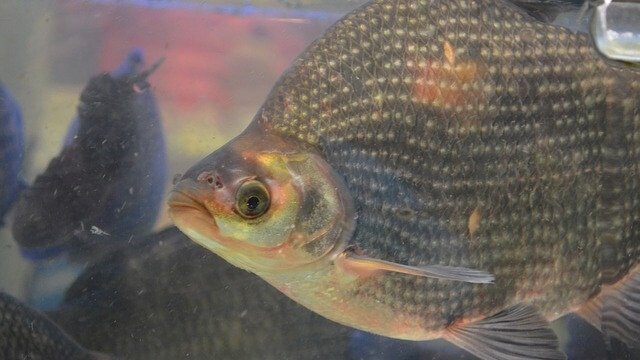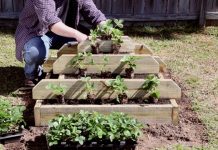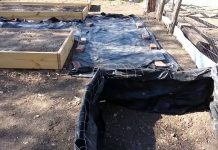For those looking to achieve food independence in 2015; here is a project that can help you along that path; an Aquaponic Greenhouse. For anyone thinking of growing their own food in northern climates; aquaponics and greenhouses work nicely together. The aquaponics system acts as a heat sink; helping to stabilize the temperature inside a greenhouse; while the greenhouse helps prevent the system from freezing. An external heat source may be needed in extreme cold conditions; which is a perfect excuse to build a rocket mass heater in my opinion.
Most people have never heard of aquaponics, but they have been used throughout history. Chinampas were used by the Aztecs as a method of raising food; they would build floating islands on shallow lakes and use waste run off from their cities to feed the plants. Early far-eastern farmers also used a similar system; integrating rice paddies and fish farming together.
Here are several benefits for using the modern version of the food production method.
- You can grow year round.
- Aquaponics utilize no pesticides.
- Plants grow quickly.
- They take up less space than a conventional garden.
- No soil is used; which eliminates weeds and soil borne diseases.
- Uses less water than traditional gardening methods.
- Uses nutrient rich water from aquaculture that is normally considered a waste product
- Generates protein and vegetables at the same time.
There is a misconception that Tilapia is needed to properly build an aquaponics system, but you can use any freshwater fish; perch, trout, catfish, etc. For those that do not plan on eating the fish; koi or goldfish can also be used.
Like all great things in life; there are some downsides to an aquaponics system.
- Commercial components can be expensive. (Costs can be minimized by building your own system as outlined in the pdf below)
- Water needs to be constantly monitored initially. (Once the system is running properly; water monitoring usually happens weekly)
- Uses electricity. (Systems can be run off solar power)
- Seems complicated. (It can be as complicated or as simple as you make it)
- Greenhouse can be expensive. (To save money on building a greenhouse; stop and talk to your local window installer to see what they do with all the old windows and doors they remove from houses. Most will give them to you for free; which saves them the cost of paying for disposal)
Here is a brief overview of an Aquaponic Greenhouse project that I found the other day. To see detailed instructions of the build, and thoughts from the builder; click HERE.
1Find A Suitable Location For Greenhouse
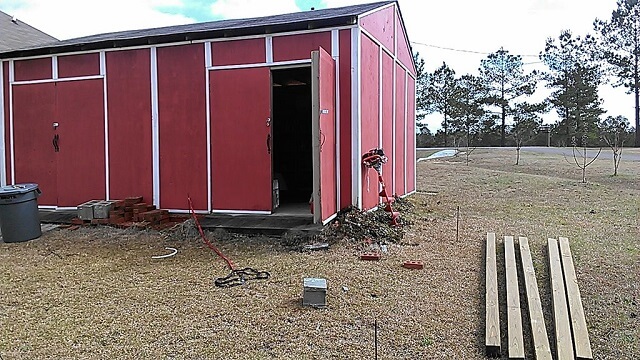
“My garden shed had two 6′ sets of doors and one was really unnecessary”
2Mark Out Post Locations
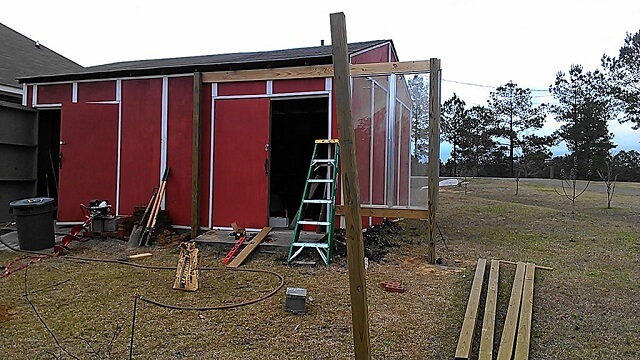
“I used 4×4 treated posts for the main verticals”
3Install Clear Polycarbonate Roofing

“I took the easy way out and simply followed the already sloping ground”
4Dig Holes For IBC’s, An Auger Helps With Hard Clay
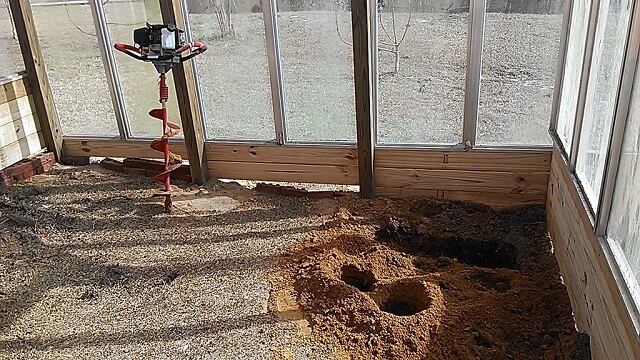
“Digging is a lot of work… so I used a post hole auger to help get them started”
5Install Your IBC’s And Pipe Them Together
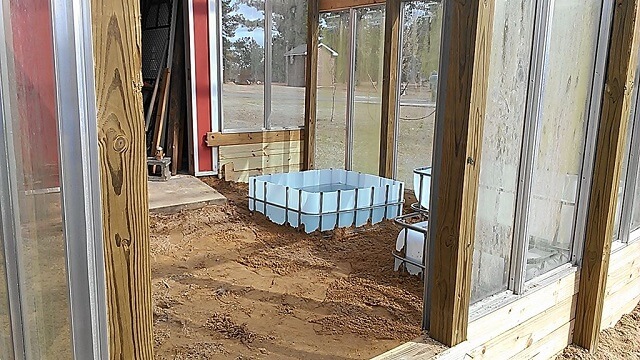
“After getting the tanks in the ground, you want to fill them with water BEFORE backfilling with dirt”
6Pipe Your IBC’s Together
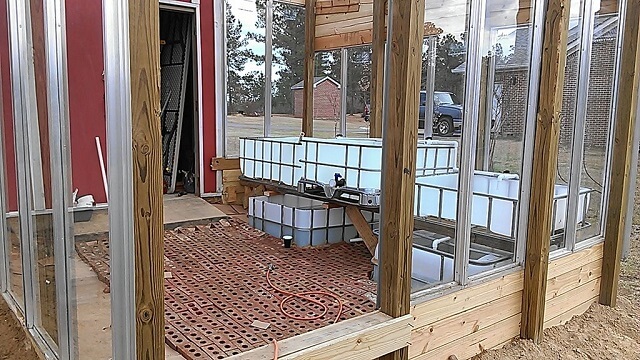
“I used electrical waterproof connectors…to go through the grow bed bottoms”
7Enjoy Your New Food Production Facility
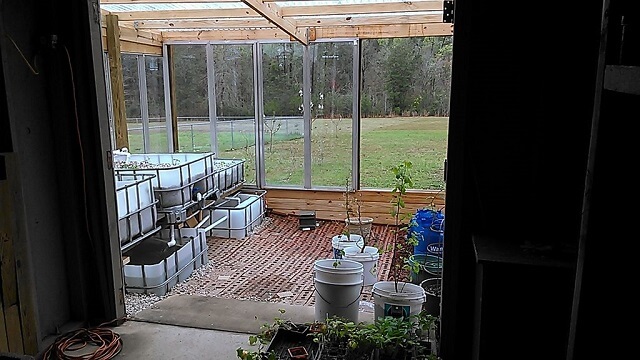
“After everything is set up, leveled up and finalized, add some plants and some fish”
For those looking for a more detailed explanation on how to build the actual IBC aquaponics system; this pdf is pretty detailed and helpful.
You can download the pdf Here.
So if you are limited on space, or want to add another food production system to make you more food independent; this is an excellent project to tackle in 2015. Good luck!

